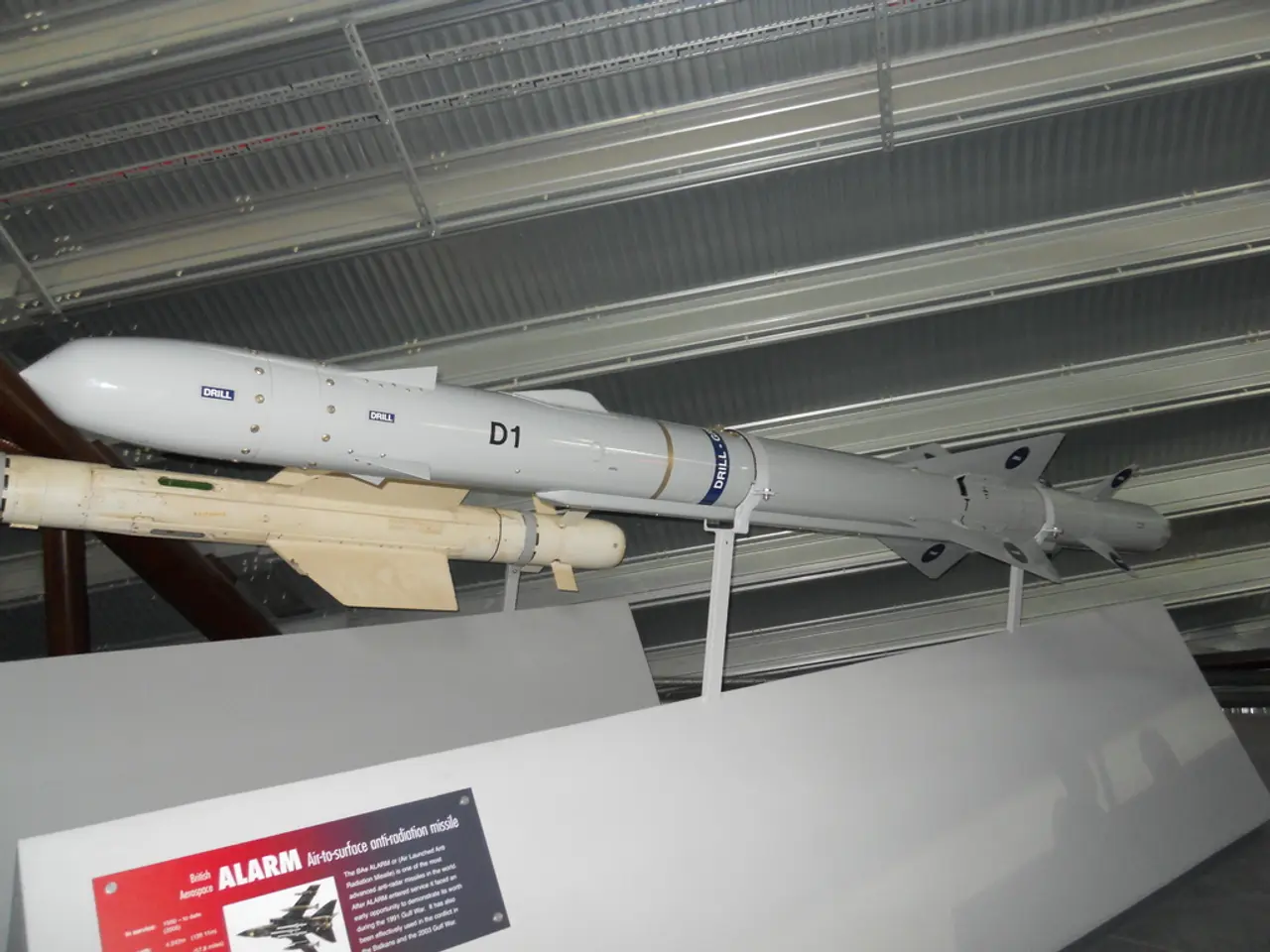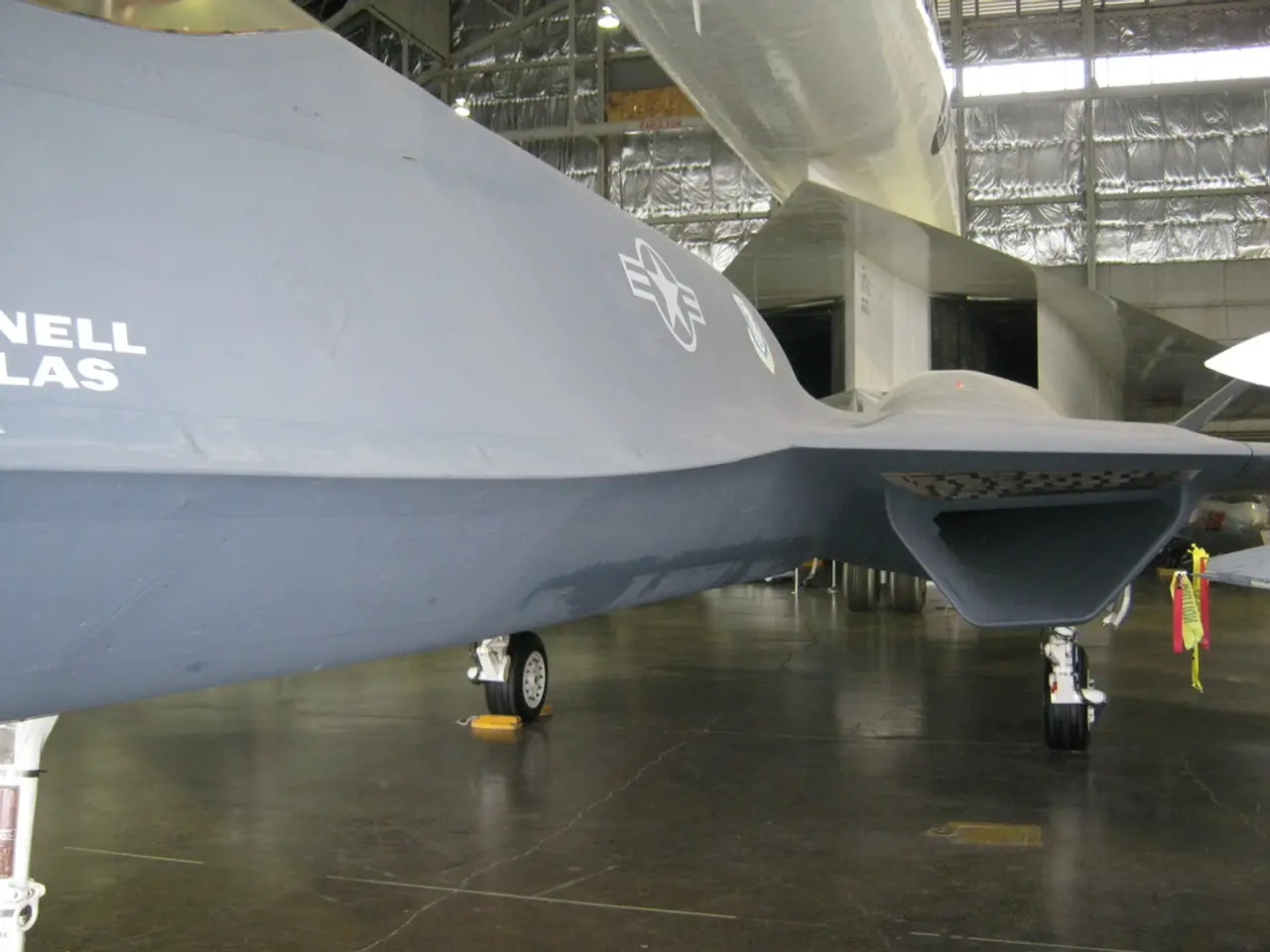Nuclear Conflict Potentially Sparked by Unfounded Dispute
In the ongoing debate in Washington, the focus is on finding the right balance between arms control and deterrence when it comes to managing nuclear risks. This balance, crucial for maintaining strategic stability, has been a cornerstone of U.S. nuclear policy for decades.
During the Cold War, policymakers, including Robert Jervis, understood that arms control agreements and deterrence worked hand-in-hand. Arms control aimed to limit and reduce nuclear arsenals, while deterrence relied on maintaining a credible threat of retaliation to prevent adversary attacks. The doctrine of Mutually Assured Destruction (MAD) exemplified this balance, ensuring that any nuclear attack would result in mutual annihilation, thus deterring use of nuclear weapons altogether.
This integrated approach shaped critical nuclear strategy decisions, preventing unconstrained arms races and reinforcing credible security guarantees. Changes in U.S. strategy, such as moving from "massive retaliation" to "flexible response," reflected efforts to fine-tune deterrence in accord with evolving geopolitical realities.
However, in recent years, the systems thinking approach, once central to U.S. nuclear policy, has become conspicuously absent. This approach, which directly influenced nuclear weapons policy, is a proven approach that policymakers can and must reengage, especially in the nuclear domain and particularly now, when the system is stressed and at a higher risk of destabilization.
The future of strategic stability may well depend on nuclear fluency grounded in systems thinking. A new lab, aimed at advancing this kind of thinking, is focusing on professional military education, where future decision-makers must understand how nuclear weapons function and how the surrounding system behaves.
The binary framing of arms control versus deterrence is misleading and dangerous. Both arms control and deterrence are interdependent tools for reinforcing strategic stability. Just as arms control is a tool to manage competition, credible deterrence is the foundation upon which arms control agreements are negotiated and sustained.
In current nuclear strategy debates, treating arms control and deterrence as conflicting approaches risks strategic instability. If arms control is neglected, it can lead to an arms race fueled by mistrust and opacity; if deterrence is weakened or ignored, the credibility of U.S. security guarantees diminishes, potentially increasing the likelihood of nuclear aggression or coercion.
The past experience demonstrates that both pillars must be upheld together to sustain strategic stability and avoid the security dilemmas that might provoke crises or conflict. For instance, the 1972 SALT I and ABM treaties were negotiated not despite deterrence goals, but in service of them.
Moreover, the United States, as a signatory to the Nuclear Nonproliferation Treaty, is legally committed and morally obligated to pursue the long-term project of arms control as a pathway toward eventual disarmament. Refusing to consider evolving deterrence requirements in light of the current security environment may weaken the credibility of U.S. commitments and reduce the leverage needed to bring adversaries to the arms control table.
Amy J. Nelson, a senior fellow with the Future Security Program at New America, serves as director of the Future Security Scenarios Lab. She emphasises that dismissing one (arms control or deterrence) in favour of the other creates strategic blind spots and undermines the systemic balance needed to prevent conflict today.
In light of the expanding nuclear arsenals of nations like China and Russia, who have violated nuclear treaties, it is essential to revive this integrated understanding to address contemporary challenges such as nuclear modernization, proliferation, and changing global dynamics. By ensuring policies avoid a false dichotomy and maintain a stable nuclear order conducive to preventing conflict, we can ensure a safer and more secure future.
[1] Jervis, R. (2022). Arms Control, Deterrence, and the Future of Nuclear Weapons. Foreign Affairs. [2] Nelson, A. J. (n.d.). The Future of Nuclear Stability: Reviving the Integrated Approach to Arms Control and Deterrence. New America. [3] Sagan, S. D. (1996). The Limits of Safety: Organizations, Accidents, and Nuclear Weapons. Princeton University Press. [4] Zarate, M. (2018). How to Renew the Nuclear Arms Control Regime. Brookings Institution.
- To maintain strategic stability and prevent conflict, both arms control and deterrence should be viewed as interdependent tools in U.S. nuclear policy, as emphasized by Amy J. Nelson, director of the Future Security Scenarios Lab at New America.
- The integrated approach to nuclear weapons policy, which balances arms control and deterrence, can help address contemporary challenges such as nuclear modernization, proliferation, and changing global dynamics, as discussed in Robert Jervis' book, Arms Control, Deterrence, and the Future of Nuclear Weapons.
- By neglecting one (arms control or deterrence) in favor of the other, policymakers can create strategic blind spots and undermine the systemic balance needed to prevent conflict, as pointed out by Nelson in her work, The Future of Nuclear Stability: Reviving the Integrated Approach to Arms Control and Deterrence.
- The past has shown that both arms control and deterrence are crucial for maintaining strategic stability, as demonstrated by the negotiation of nuclear treaties like the 1972 SALT I and ABM treaties, not despite deterrence goals, but in service of them.
- In the realm of military education, it is essential to foster nuclear fluency grounded in systems thinking, as stated in the work of Michele Zarate, to prepare future decision-makers to understand nuclear weapons functions and the system's behavior, leading to more informed policy-and-legislation decisions during war-and-conflicts and general-news situations.






